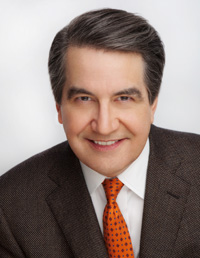The tin man famously had no heart. Neither did Dallas, if you think about it. Before October’s opening of the AT&T Performing Arts Center, where would you have put it?
I know where to put it now. Woodall Rodgers Park, when it opens in 2011, will reorient our 150-year-old conception of downtown. I don’t mean only spatially, although the Arts District has already tugged development northward. I mean spiritually.
Dallas, from its beginning as a humble trading post, has considered itself a business town, a regional commercial center. With this new park, Dallas breaks out of its own definitional shell. The park caps a decades-long emergence that has brought Dallas into its own as a full-fledged city, where people live, love, eat, drink, and play as well as work.
It wouldn’t have happened but for the intervention of one man 40 years ago.
In the late 1970s, the State Department of Highways and Public Transportation (as it was then called) finally began to build a connector freeway between Central Expressway and I-35. The plan for an elevated connection had been on the drawing boards for decades, but the money could never be found. Finally, a deal had been struck. If the city paid for drainage, the state could afford to do the actual construction.
The bulldozers were already at work when urban design consultant Vincent Ponte, who was based in Montreal, got wind of the plan. Ponte realized at once that an elevated highway would strangle downtown, ruin the planned new Arts District, and permanently divide the city.
Ponte insisted the plan stop. But the highway was already under construction. The funds were already being spent. Nonetheless, Ponte argued passionately to anyone who would listen that the freeway must be redesigned to go below ground. If the engineering was done right, the freeway could even be covered with a park that would connect, rather than divide, the city.
The mayor was Robert Folsom. The city manager was George Schrader. Each was among the best in his post that Dallas has ever seen. Neither was known for impetuosity. But Ponte was something of a power in his own right. He had worked with legendary mayor Erik Jonsson to plan Dallas’ future in the ’60s. Now, less than a decade later and working off Ponte’s blueprints, the city was on a roll, with a new City Hall, a new convention center, and a new art museum. If Ponte was right, the consequences of this freeway would be catastrophic. Folsom and Schrader decided to act—fast.
They approached the state transportation people and told them they no longer supported the previously approved plans. They said that because of Ponte’s insistence, they believed they were making a mistake. The state reluctantly agreed. And the bulldozers halted.
What if one man hadn’t raised the alarm? What if Folsom and Schrader hadn’t responded? Years later, civic leaders such as Jody Grant and John Zogg would look at that below-ground highway and see what Ponte saw. Because of them, the bulldozers are once again at work, this time putting sod where concrete was supposed to go.
Woodall Rodgers was opened in 1981, the same year George Schrader and Robert Folsom stepped down from their civic jobs. Vincent Ponte lived until 2006, long enough, I hope, to hear that his fight of four decades ago is finally bringing Dallas what it has needed most—a heart.
Write to [email protected].






